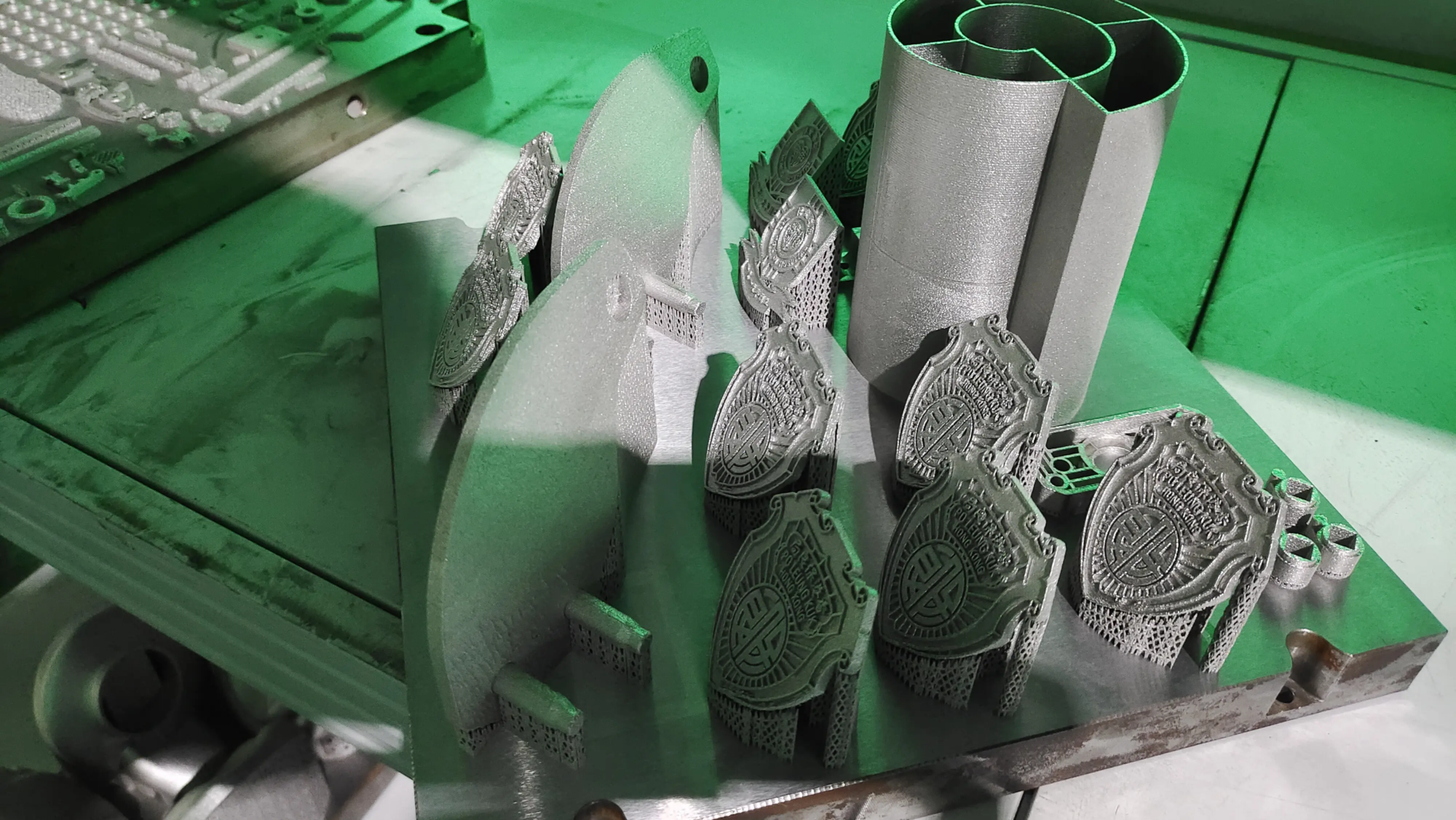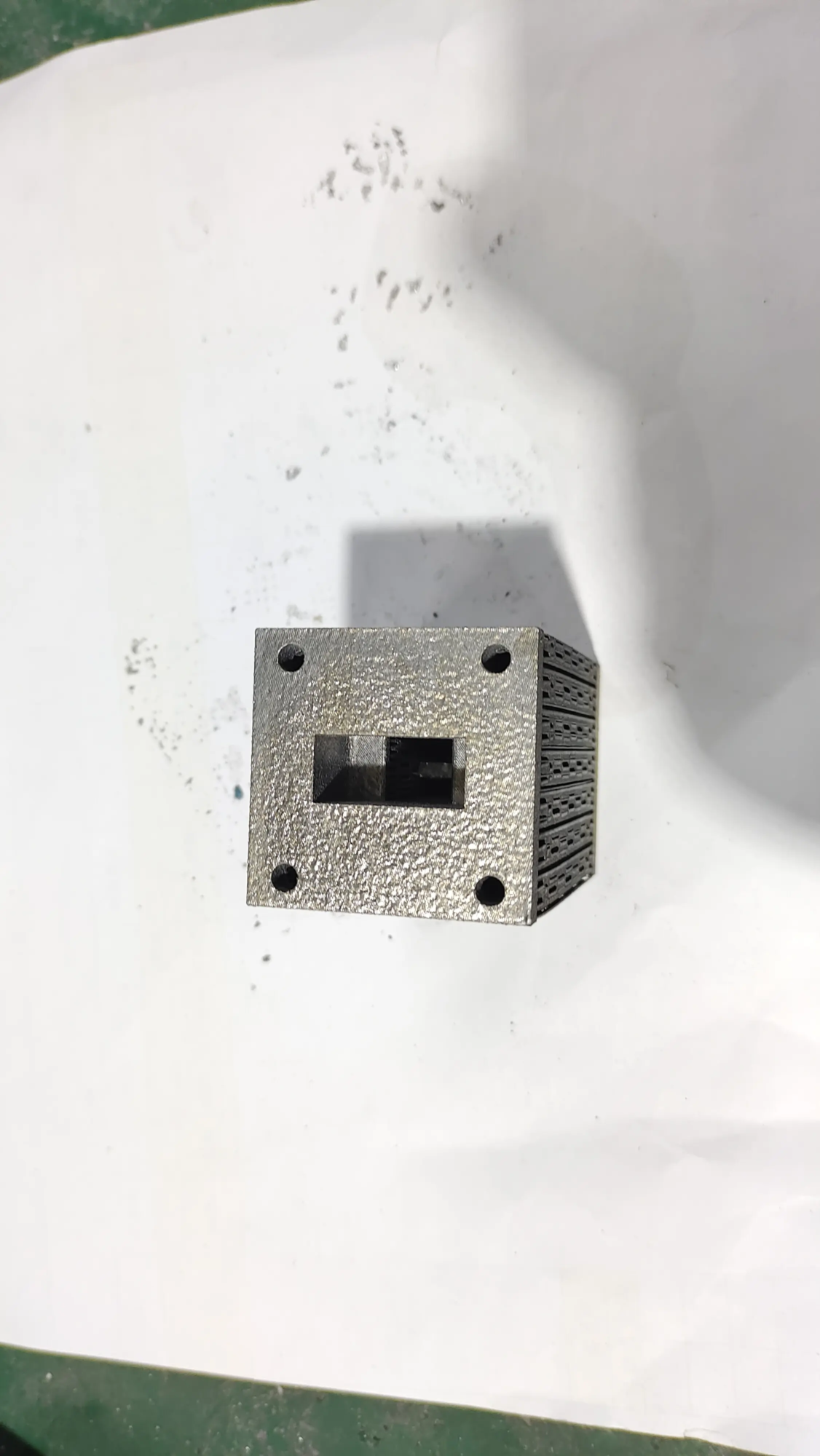Build your own Voltron: The Ultimate 3D Printing Mission
Imagine assembled by five different robotic lions, commanding the towering defenders of the universe. Voltron is not only a nostalgic idol; it is the pinnacle of collaborative design – perfect for transforming into the world of 3D printing. Creating your own fully articulated, impressive Voltron model is not only a project; it is an adventure that combines design, engineering and craftsmanship. Thanks to modern 3D printing technology, especially advanced technologies such as selective laser melting of metals (SLM), this dream is more fulfilling than ever. As a leader in rapid prototypes with state-of-the-art SLM capabilities, Gremphiem thrives to transform this complex vision into a tangible reality.
Why 3D printing of Voltron?
The building of Voltron is inherently complex. Its charm is transforming a single lion (black, red, green, blue, yellow) into a powerful warrior. This requires:
- Interlocking accuracy: The seamless connection of limbs, trunk and head requires a perfect fit in millimeters.
- joint: If you want dynamic postures, the joints of the knees, elbows, shoulders and hips must move smoothly.
- Durability: Especially for moving parts and connection points, material strength is crucial.
- Aesthetic details: Achieving sharp lines, detailed surfaces and exquisite surfaces bring the defenders of the universe to life. 3D printing provides unparalleled freedom to address this complexity step by step, print complex components, and customize the details that few business models offer.
Your step-by-step guide to 3D printing Voltron
1. Digital Blueprint: Find or Design Models
- source: Many complex Voltron STL/OBJ files are available online (usually paid, respect IP!). Find designs specially designed for printing – Intelligently separate across lions and their combined forms, with clear assembly guides and pre-designed joints/pin.
- custom made: Want a unique shoulder cannon? Different head designs? Using CAD software (such as Fusion 360, Blender, TinkerCad) allows modifications and even starting from scratch. Ensure consistency in proportion! 1:144 ratio Voltron is very different from the desktop beast. Consider print bed size limitations for large combination models.
2. Material Important: Choose Yours "The lion’s skin"
The right material is crucial to look, feel and function:
- PLA (polylactic acid): Great for beginners and visual prototypes. Easy to print, with a width range, perfect for static display. Less ideal are high pressure joints or heat exposure.
- PETG/PET: Stronger than PLA, more durable and slightly flexible. Better heat and impact resistance. Good all-around ball for joint lions that require joint strength.
- ABS/ASA: Very sturdy, durable and heat resistant. It is essential if you plan to draw. Due to warping and smoke, a closed printer is required. Ideal for complex joint components.
- Nylon (PA): More robust, with good flexibility, can be used for snapshots. It can be trickier to print due to the moisture absorption, but provides incredible durability for playable models.
- Resin (SLA/DLP/LCD): Premium details capture of smooth surfaces and complex geometric shapes. Ideal for very detailed heads, weapons or decorative elements. Finished parts can be brittle; less desirable large structural parts or constant moving joints.
- Metal (via SLM/SLS-Professional Service): For the ultimate heirloom quality Voltron, consider Metal 3D printinglike Selective laser melting (SLM) Provided by Greatlime. Metal components are printed in materials such as aluminum, stainless steel or titanium to provide unparalleled stiffness, weight, durability and heat resistance. Ideal for critical load joints or to achieve authentic metal finishes. This level requires a professional service provider. (Tip: Gremight uses advanced SLM technology here, offering a variety of metal and expert design optimizations).
3. Printing process: Perfect each component
- Printer settings: Calibration is not negotiable! Make sure to dial in the bed, nozzle height and extruder temperature. The housing is essential for ABS/ASA and helps warp other materials.
- Slicing software settings:
- layer: Layer height of visual parts 0.1-0.2mm; structural/internal parts 0.2-0.3mm.
- filling: Display parts 15-25%; parts under pressure or parts requiring weight 30-50%+.
- Walls/Around: 3-5 walls significantly improve strength and durability.
- support: It is crucial for overhanging. For joints and complex points, tree support can save material, but standard support provides safety.
- direction: Position the parts to minimize support on critical surfaces. Print joints (pin, socket, ball joint) are upright to maximum strength along the layer line.
- cool down: Crucial to PLA; use abdominal muscles conservatively to prevent warping.
- Patience and monitoring: Voltron involves hundreds of hours of printing. Monitor early layers and complex constructions. Failure is part of the process – optimization and reprinting.
4. Post-processing: From original to royal robot
This stage turns rough prints into a United Walterrane worthy of the throne:
- move: Be careful to remove the support. Tweezers, rinse the cutting machine and gently scratch to help.
- clean: Thoroughly clean the resin parts (if applicable). Remove dust/debris from individual parts.
- Grinding: Progress through grit (120-> 220-> 400-> 600+) to eliminate laminar lines, support scars and smooth surfaces. It is crucial for the area you join or move.
- Fill and start: Use fill putty to make bigger defects. Spray primer (filled with strips helps) to reveal imperfections that require more polishing.
- Pain and finishing:
- Use high-quality acrylic or enamel paint designed for the model.
- Tape is essential for clean color separation (e.g., lion to limb).
- Metal or professional finishes (candy paint, powder) enhance the effect.
- Apply a sheer coat (Lion’s gloss/varnish, frosted/satin arms/legs) for protection and gloss.
- Custom decals add personality. Greatlight’s one-stop service includes expert polishing, polishing, painting and assembly finishes to bring your projects from original prints to museum quality.
5. Rally: Unity Lion
- Doing cooperation: Test fits all parts before any permanent adhesion. Identify friction points or tight joints that require light sanding. Lubricating pin joint with dry ptfe lubricant.
- Adhesive: Super glue (CA) is fast for plastics. Epoxy resins are best suited for the strength of the bearing area or metal bonding to plastics. PLA/ABS (melt and fuse) is used with plastic cement. For metal joints or complex multi-material components, professional bonding technology may be essential.
- Mechanical curing: For maximum strength and potential disassembly (especially metal parts), small screws are dug into printing bosses (design!) can outperform glue.
- Final touch: Add weapons and fix the head to ensure smooth transition.
Conclusion: The monitor’s defense lawyer
Building a 3D printed Voltron is a huge achievement. It tests perseverance, precision and passion. Whether you choose the route for the desktop FDM printer for the vibrant PETG Lions or work with rapid prototyping experts like Greatlight (Greatlime) to achieve breathtaking durable metal Voltron with SLM technology, the result is impactful. Not only do you build a model; you forge it for your own defenders of the universe through carefully crafted works. This process embodies the spirit of two Voltrons – unification creates unparalleled power – and the unlimited potential of modern additive manufacturing. So assemble your team (silk spools, printers and determination), meet step-by-step challenges, and release your robot champion to the world!
FAQ (FAQ)
Q1: Can I print a Voltron without any prior experience in 3D?
- one: This is ambitious! Dedication, extensive online resources, and the choice of simpler pre-splicing models is strongly recommended, but basic 3D printing knowledge is strongly recommended. It is wise to start practicing by printing a single lion first.
Q2: Why is metal 3D printing (such as SLM) recommended for certain Voltron parts?
- one: SLM (Selective Laser Melting) produces solid metal parts from the powder. For Voltron, this offers unparalleled benefits for a specific application:
- Key joint strength: Metal pins, hinges and connection points can withstand constant motion and pressure much better than plastic.
- Weight and Feeling: Adding a lot of weight, enhancing realism and stability.
- Durability: Resistant to wear, cracking and high temperatures.
- Premium finish: Achieve a convincing metallic look that can be polished to a high gloss. (Greatlight specializes in SLM for rapid prototyping needs of this requirement).
Q3: How long does it take to assemble a complete Voltron in 3D printing?
- one: This is very different:
- Model size: Small desktop model with 2ft Giant? It is estimated to be dozens of hours to hundreds of hours.
- Complexity/part count: More complex models = more prints/components.
- Printer and Settings: Faster printers or higher layer heights reduce time and sacrifice detail.
- experience: Post-processing (grinding, painting) is usually the most time-consuming stage. Plan for weeks to months for detailed professional completion.
Question 4: What is the biggest challenge of 3D printing of Voltron?
- one: Implement functional expression.
Ensuring that joints (shoulders, hips, knees) not only blend perfectly, but also move smoothly without too much friction or weakness requires careful design optimization, precise printing (especially orientation and layer adhesion), careful post-treatment (sanding mating surfaces) and potentially powerful materials or potentially powerful materials or high pressure materials manufacturing.
Question 5: Do I need to buy 5 printers to make lions faster?
- one: No, definitely not! A good printer is enough. Printing each lion in sequence is standard. Optimized nesting on the printing bed allows for printing several smaller parts simultaneously on the large bed printer. However, using services like Greatlight allows all 5 lions (and their components) to be printed on industrial equipment simultaneously.
Q6: If I only have one design concept and the 3D file is not completed, can Greatlight help?
- one: Yes! As a full-service rapid prototyping partner, Greatlight provides DFM (Design Manufacturability) assistance. Our engineers can optimize your concept or STL files specifically for 3D printing (SLM, SLS, FDM, SLA) to ensure structural integrity, optimal support for generation and minimize post-processing needs. We handle design verification, printing across a variety of materials (plastics and metals), and comprehensive finishing – all under one roof. Request a quote for your custom Voltron project!
Ready to start your Voltron manufacturing journey? Explore great potential and transform your horizon into precise reality.




